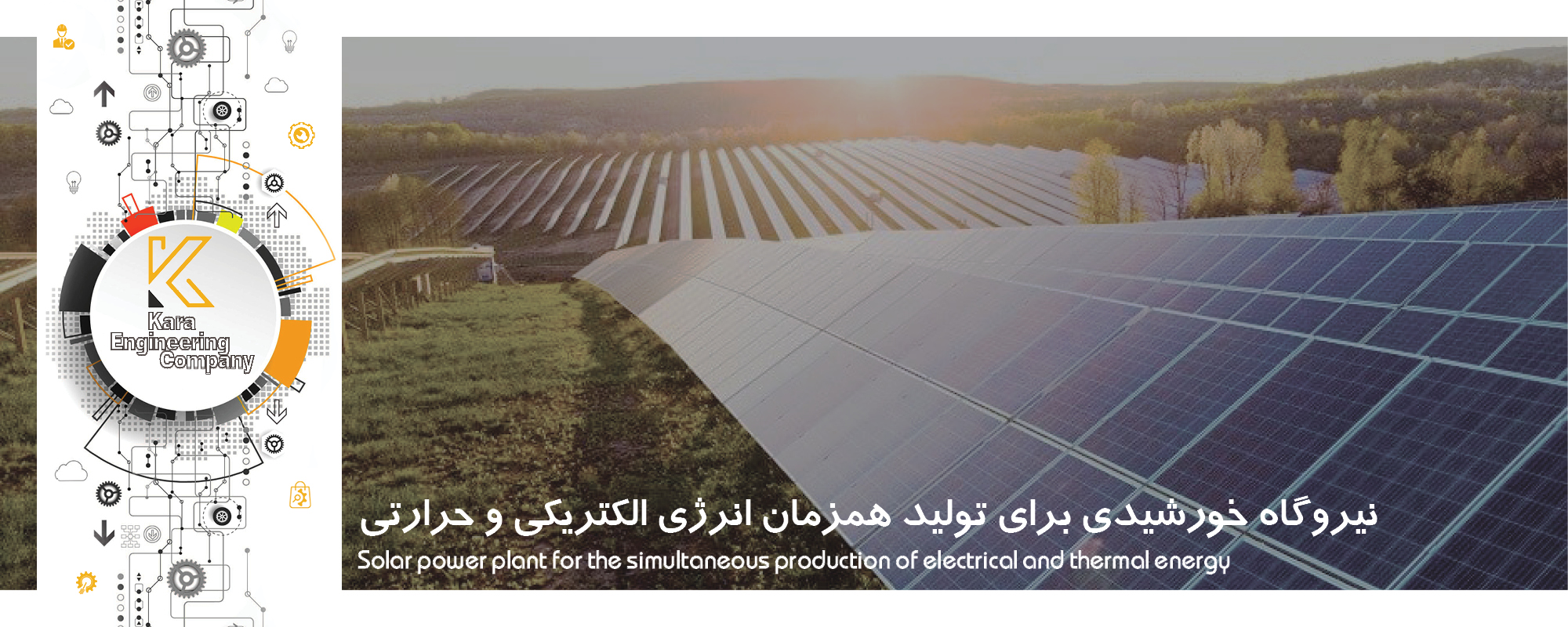
In this article, a solar power plant capable of producing electricity and heat is described. The problem of choosing a solar cell (photoelectric converter), which is a very effective factor in high concentration and absorption of solar rays, has been investigated. Also, the method of choosing an optimal radiation reflection system for two-way solar cells and the produced heat removal system (cooling system) are shown. The results of the tests are also presented.
Today, mineral and hydrocarbon resources are limited, so we are facing the problem of preventing the impending energy crisis as well as the disruption of the national economy and energy security under the above conditions in the country. One of the solutions to this global problem is the use of renewable energy.
The most widespread and available renewable energy available is solar energy, which reaches the earth about 1018 kWh per year. Therefore, the conversion of solar energy using photoelectric converters is very promising In 2008, by doubling the production of solar cells, 3.7 GW of energy was produced. At the same time, it should be noted that the features of these systems that only use photoelectric or thermal converters are rapidly becoming saturated. According to the rules of development of a technical system, this means that the corresponding curve has reached the saturation point.
Based on this fact, new systems that perform both types of conversion at the same time (instead of traditional power plants) have attracted the attention of experts. Therefore, specialists of the Russian Electrotechnical Institute (REI) have done a lot of scientific work and studies in the field of the possibility of designing a hybrid power plant based on high-voltage silicon multi-junction solar cells (SVSCS), a technology that was previously developed.
Characteristics of solar power plants
Solar power plants that produce both electrical and thermal energy are currently gaining attention due to the fact that experts are trying to find ways to increase the conversion efficiency of solar energy and lower the total cost of energy production as well as profit. They have taken from the power plant.
In this case, the production efficiency for each energy is reduced to some extent compared to power plants that produce electricity or heat separately. The main elements of the structure of combined power plants are the photoelectric converter (solar cells), the solar energy concentrator and the thermal part of the power plant, and the electrical part of the power plant along with its control system is also very important. In this article, all the above-mentioned elements and parts of the power plant have been discussed. However, the latter two are designed using standard (industry-produced) units that are not described here.
Photoelectric converters (solar cells)
When analyzing whether it is possible to design a hybrid power plant, we decided to use multifunctional photoelectric converters (solar cells) with a vertical p – n junction.
These photoelectric converters are used because of their features. They can work at higher temperatures and maintain their efficiency. In addition, SVSCs can be used at high concentrations (20-30 bar) with forced cooling system.
This makes it possible to increase the efficiency of the thermal part of the power plant, which depends on the temperature. This type of solar cells consists of a set of p-n junctions that are connected in series and placed in parallel to the end of the p-n junction.
The physical rules of p-n junction operation are as follows.
If the solar cell is planar, it produces a voltage that corresponds to a p-n junction, while in a multi-junction solar cell, the voltage is N times higher (the number of p-n junctions are connected in series) and also the current with area A p-n junction is defined because the cells are connected in series.
These characteristics of photoelectric converters provide the possibility of producing a higher output voltage and thus reducing electrical losses in the connected conductors.
Another advantage of multi-junction solar cells is its bidirectionality. Both sides are irradiated and the efficiency and other electrical parameters of each side are exactly the same
The expected efficiency of this type of solar cell is about 20%. Since there is no contact on the receiving surfaces and no problems in terms of leakage resistance, the solar cell can work with a high concentration of radiation (high light concentration). In the meantime, a new solar cell structure covered with additional nano layers has been proposed. The technology of this solar cell has been developed and patented.
 Translate
Translate